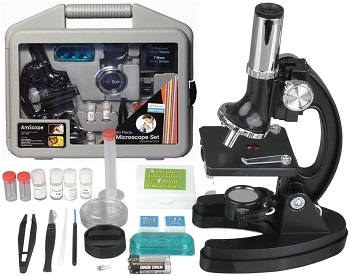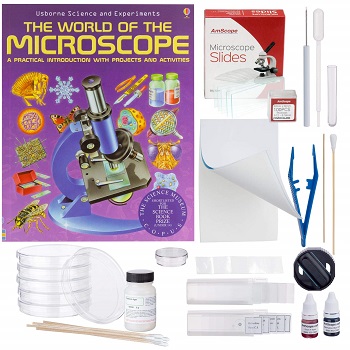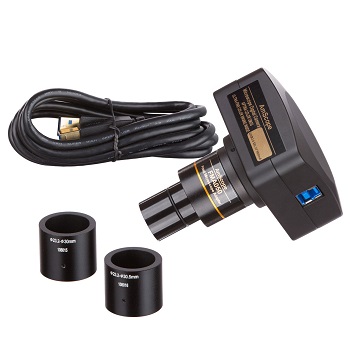Microscope Specifications

- AmScope M30-ABS-KT51is one of the best seller microscopes in kids’ microscopes and has three magnifications. This beginner microscope has 120x, 240 xs, 300x, 480, 600x, and 1200x magnified images.
- The frame present in this microscope is made of high quality and is substantial. The material used in this microscope is metal and plastic. The frame also consists of a stage and clips.
- Two types of illuminations are present in it 1—natural light 2. A direct light-reflecting mirror provides natural luminance. On the other hand, light already presents in it provides direct.
- A small tower is also known as a turret, is used to show power. And for ingenious luminance, a reflecting-looking glass is present. The light source used in this microscope is LED light, and the type of case used is abs along with high ampere batteries.
Looking to start your child on their scientific journey? With AmScope’s beginner microscope, they can explore the world of tiny creatures and plants! This microscope offers up to six different magnifications, letting your child see specimens at different levels of detail. The metal construction is durable and will last through many scientific adventures.
Need to learn more about the world around you? Start with the AmScope M30-ABS-KT51 Beginner Microscope! This powerful microscope is perfect for students of all ages, and it’s easy to use. The Reflecting mirror system provides natural illumination, while the built-in light allows for direct illumination. Plus, there’s a Rotating color filter wheel that helps you see things in a new light. And best of all, this microscope comes with an ABS case and 2 AA batteries included!
FAQs
How well can you see small things such as cells? Can you see the processes going on and organelles and such?
You can see the borders of the cell, but not more. Definitely not the processes in organelles, etc.
Can I able to see the observation on the computer?
No, you can’t see the output observation on the computer or screen.



